ROOM: The Space magazine is one of the major magazines on space exploration, technology and industry. At ROOM, we share a common goal – advancement of peaceful space exploration for the benefit of humankind, all while bringing you detailed articles on an array of contemporary topics. Our authors include experts and industry leaders from all over the world, which lets us bring you the newest and comprehensive information about journal science kepler 186f.
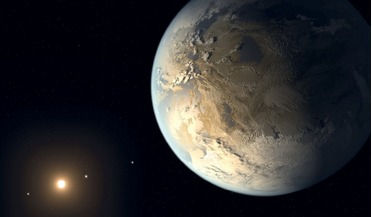 August 2018
Exoplanet census promises radical discoveries
August 2018
Exoplanet census promises radical discoveries
...will give us a complete statistical census of exoplanets at all orbital separations when combined with the Kepler satellite’s statistical census of short period planets. A second WFIRST instrument, called a coronagraph, will...While the combination of radial velocity, transits and microlensing have made possible tremendous advances in exoplanet science, it is only direct imaging that can characterise a planet’s atmosphere and can potentially search ...
 September 2017
Science searches for cosmic company
September 2017
Science searches for cosmic company
... of these planets lie in the habitable zone. This artist’s concept appeared on the cover of the journal Nature in February 2017. Similarly, the public has long been exposed to the idea of intelligent aliens ...Shostak is Senior Astronomer at the SETI Institute in Mountain View, California. He is also the host of ‘Big Picture Science’, the SETI Institute’s weekly radio show, and is committed to getting the public, especially young people, excited...
 August 2017
Big science from small spacecraft
August 2017
Big science from small spacecraft
... the Martian atmosphere by looking at the absorption of sunlight, just-like-that we would have had a science mission in a cubesat form factor. Prof David Spencer of Purdue University aims to go one better in ... JPL’s incubator of new ideas, the Innovation Foundry, working on many mission concepts across Earth Science, Planetary Science and Astrophysics. He also teaches Aerospace Engineering (with a focus on nanosats), Systems Engineering and...
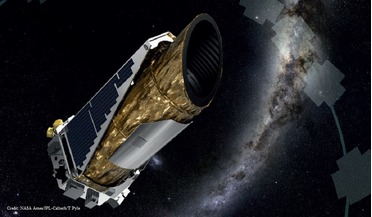 October 2015
Finding Earth-like worlds: the tale of how Kepler-452b was discovered
October 2015
Finding Earth-like worlds: the tale of how Kepler-452b was discovered
... than the orbit of Mercury and the outermost of which would fall within the orbit of Venus. And Kepler 186f which was announced in April 2014: a 1.2 Earth radius planet in the habitable zone of a small star... 20,000 transitlike features are real. It takes a lot of computational power. That’s why we moved our entire science pipeline to the NAS Pleiades supercomputers. So as we’ve improved our pipeline and improved our sensitivity to small planets we...
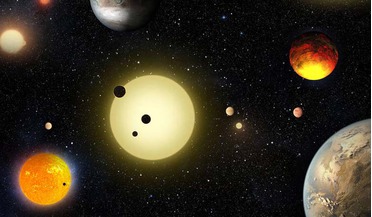 11 May 2016
Kepler scientists announce a major increase in confirmed exoplanet numbers
11 May 2016
Kepler scientists announce a major increase in confirmed exoplanet numbers
...and lead author of the scientific paper published in The Astrophysical Journal, said “today, we are announcing the discovery of 1284 new planets in the Kepler mission. This is the most exoplanets that have ever been ... of starlight and therefore detect the presence of the transiting planet. So far, using this method, Kepler scientists have identified about 4700 exoplanet ‘candidates’ and have validated about 1000 of them as actual exoplanets...
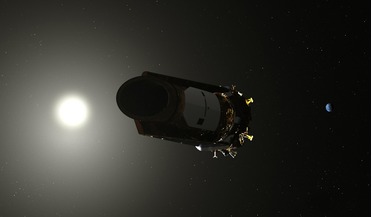 19 November 2018
Kepler officially retires after receiving final "goodnight" commands
19 November 2018
Kepler officially retires after receiving final "goodnight" commands
... and search for life in the solar system and beyond," said Thomas Zurbuchen, associate administrator of NASA's Science Mission Directorate in Washington. “Its discoveries have shed a new light on our place in the universe, and ... data and how future missions will build upon Kepler's results." But it is the end for the spacecraft itself. With the end of science operations and no fuel, Kepler will remain forever in orbit around the Sun, at around...
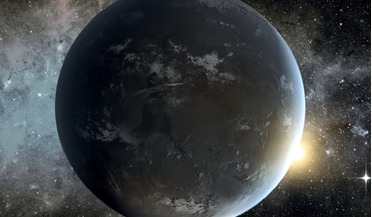 October 2019
Are we prepared for SETI discovery?
October 2019
Are we prepared for SETI discovery?
...In 2018, an international group of first-class experts in SETI proposed and published in the International Journal of Astrobiology a Version 2.0 of the Rio Scale. The paper was authored by seven contributors, including... the city’s Eötvös University in 1954. As an astronomer at the Konkoly Observatory of the Hungarian Academy of Sciences, he pioneered optical tracking of artificial satellites at the dawn of the Space Age, in 1957, and investigated ...
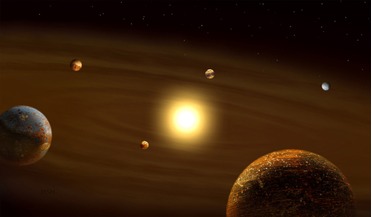 27 July 2019
Hundreds of new planet candidates detected by Kepler
27 July 2019
Hundreds of new planet candidates detected by Kepler
... host star and the largest is only three times the size of Earth. During nearly a decade of service, Kepler observed a staggering 530,506 stars and detected over 2,600 planets; a remarkable feat given that four... Earth-like planets around main sequence stars like our sun as it was designed to, it was proposed that Kepler search for habitable worlds around smaller, dimmer red dwarfs in a different direction to which it had been looking...
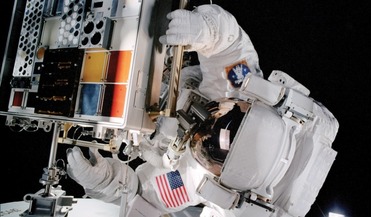 May 2018
Challenging the boundaries of materials science
May 2018
Challenging the boundaries of materials science
... evolve at an increasing rate, Dr Barrie Dunn looks at how the global space industry is pushing the boundaries of materials science and is addressing the need for more qualified materials engineers in the field. Technology in the space industry...